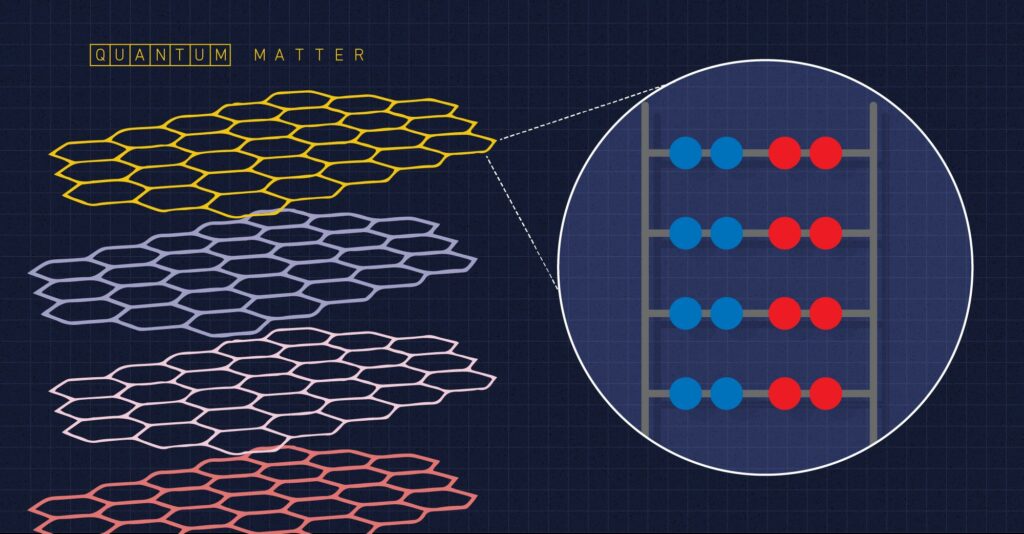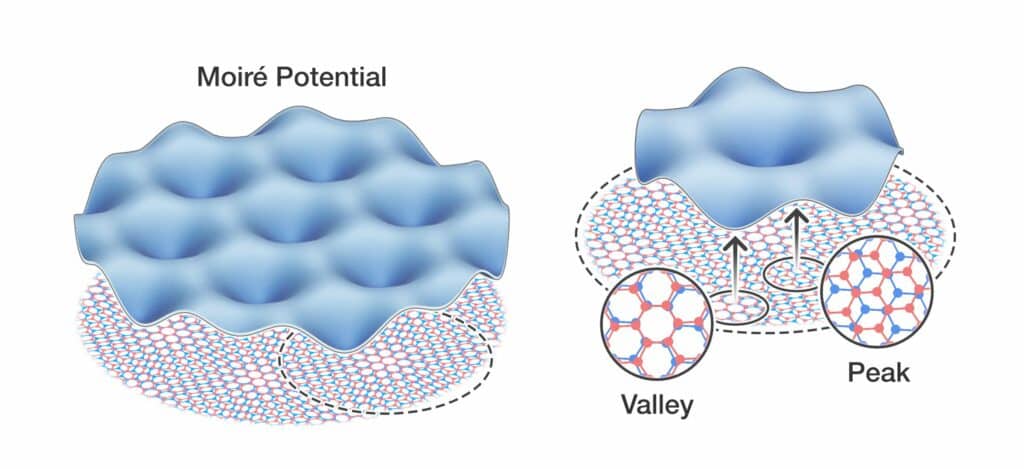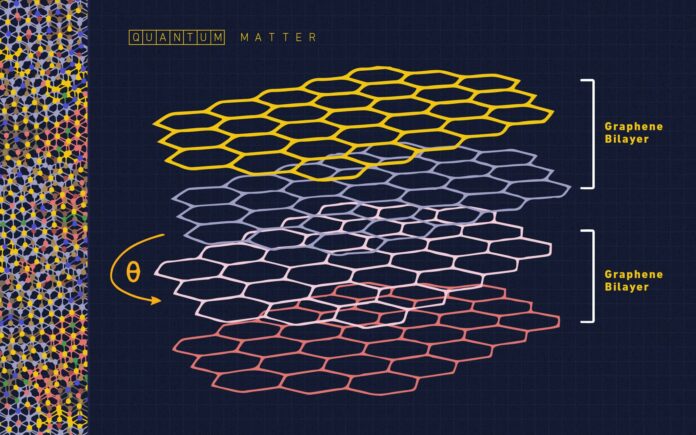These materials, known as moiré quantum matter, can transform into superconductors with zero electrical resistance, perfect insulators, or abruptly produce their magnetic fields depending on the twist angle.
A “quantum ruler” has been created by Joseph A. Stroscio, his coworkers at the National Institute of Standards and Technology (NIST), and a worldwide group of partners to measure and investigate the peculiar characteristics of these twisted materials. The research may also result in a new, miniature electrical resistance standard that could be used to calibrate electronic devices right on the production line, obviating the need to ship them to an off-site standards lab.
A moiré quantum matter device was made by collaborator Fereshte Ghahari, a physicist at George Mason University in Fairfax, Virginia, using two layers of graphene (also known as bilayer graphene) around 20 micrometers across. The gadget was created by Ghahari using the Center for Nanoscale Science and Technology at NIST’s nanofabrication facility. When frozen to one-hundredth of a degree above absolute zero, the twisted material device created by NIST scientists Marlou Slot and Yulia Maximenko increased the capacity of electrons in the material to interact with one another.

Scientists used a versatile scanning tunneling microscope to measure the energy levels. The microscope captured the minuscule current produced by the electrons that “tunneled” from the material to the microscope probe tip when the scientists applied a voltage to the graphene bilayers in the magnetic field.
The NIST scientists discovered indications of a new quantum ruler when they changed the magnetic field applied to the moiré graphene bilayers. The area bounded by the electrons’ elliptical orbit multiplied by the magnetic field in use was no longer a fixed quantity. Instead, a difference based on the magnetization of the bilayers was seen in the product of those two quantities.
A series of separate tick marks represented the energy levels of the electrons as a result of this discrepancy. The research offers fresh insight into how graphene’s twisted sheets of electron-constrained graphene produce novel magnetic characteristics.
Joseph A. Stroscio at NIST said, “Using the new quantum ruler to study how the circular orbits vary with magnetic field, we hope to reveal the subtle magnetic properties of these moiré quantum materials.”
NIST theoretical physicist Paul Haney said, “In moiré quantum materials, electrons have a range of possible energies — highs, and lows, shaped like an egg carton — that are determined by the electric field of the materials. The electrons are concentrated in the carton’s lower energy states or valleys. The large spacing between the valleys in the bilayers, bigger than the atomic spacing in any single layer of graphene or multiple layers that aren’t twisted, accounts for some of the unusual magnetic properties the team found.”

The new measurements promise to provide a deeper understanding of how scientists can tailor and optimize quantum materials’ magnetic and electronic properties for various applications in microelectronics and related fields. The properties of moiré quantum matter can be chosen by choosing a specific twist angle and several atomically thin layers. For instance, quantum moiré superconductors are among the most delicate and are already known to be ultrathin superconductors that are susceptible detectors of single photons.
The NIST group is also intrigued by a different application: under the correct circumstances, moiré quantum matter might offer a brand-new, more straightforward norm for electrical resistance.
The current standard is based on discrete resistance values that a material exhibits in response to applying a powerful magnetic field to the electrons in a two-dimensional layer. The electrons in the previously stated circular orbits have quantized energy levels, which are the source of this phenomenon, also known as the quantum Hall effect. The resistance in different electrical devices can be calibrated using the discrete resistance values. However, the calibrations can only be carried out in a metrology center like NIST because a strong magnetic field is required.
Stroscio said, “If researchers could manipulate quantum moiré matter so that it has a net magnetization even in the absence of an external applied magnetic field, then it could potentially be used to create a new portable version of the most precise standard for resistance, known as the anomalous quantum Hall resistance standard. Calibrations of electronic devices could be performed at the manufacturing site, potentially saving millions of dollars.”
Journal Reference:
- M.R. Slot, Y. Maximenko, P.M. Haney, S. Kim, D.T. Walkup, E. Strelcov, Son T. Le, E.M. Shih, D. Yildiz, S.R. Blankenship, K. Watanabe, T. Taniguchi, Y. Barlas, N.B. Zhitenev, F. Ghahari and J.A. Stroscio. A Quantum Ruler for Orbital Magnetism in Moiré Quantum Matter. Science. October 5, 2023. DOI: 10.1126/science.adf2040
